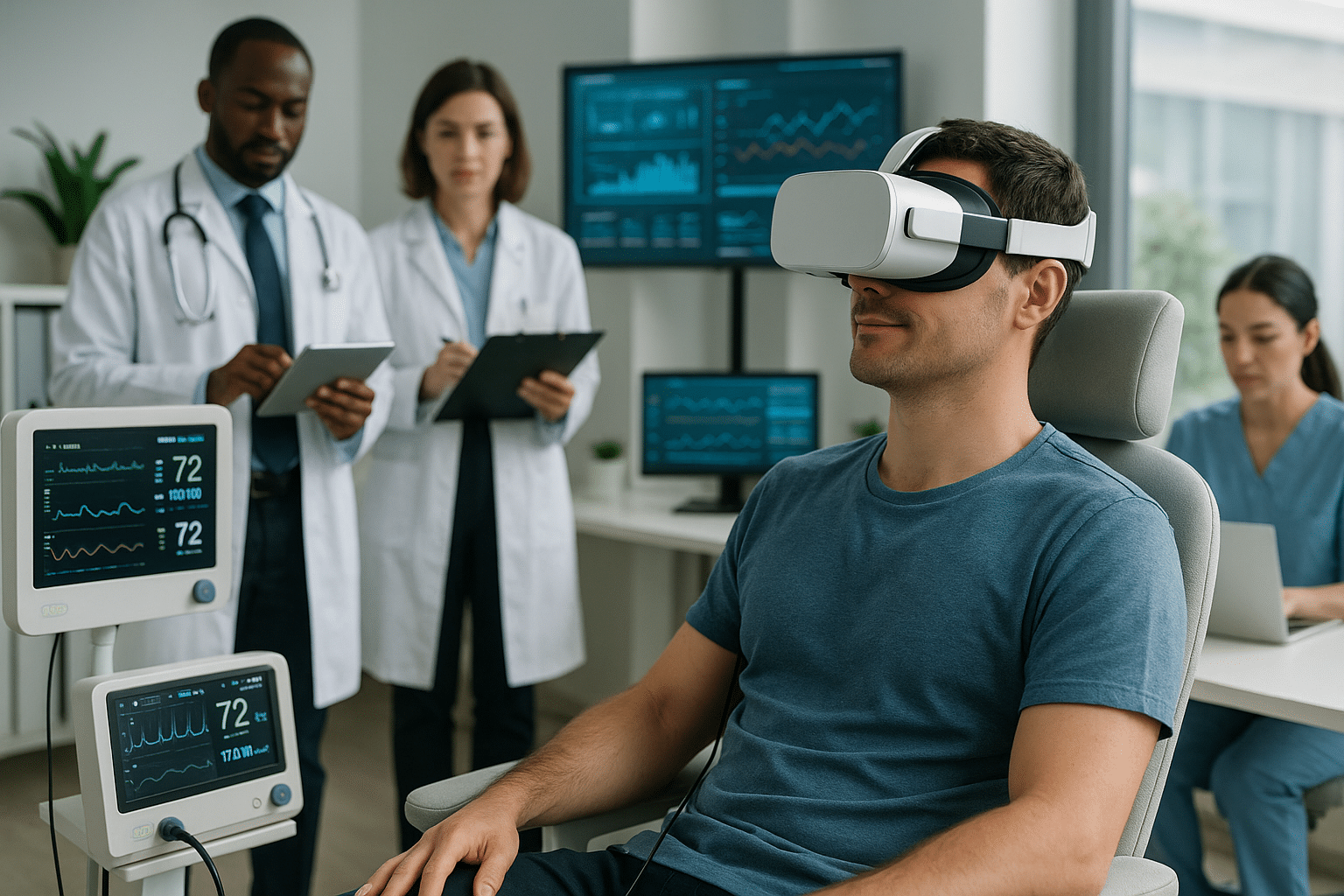Imagine a world where you can confront your deepest fears, travel to far-off places, or even practice life-saving medical procedures—all from the comfort of a single room. This isn’t a scene from a sci-fi movie; it’s the exciting reality of Virtual Reality (VR) therapy. 🌐 Over the past few years, VR has evolved from a mere gaming novelty to a groundbreaking tool in clinical settings. But what exactly makes VR therapy so effective, and why is it becoming a pivotal component in modern healthcare?
In this article, we’ll embark on a fascinating journey through the realm of virtual reality therapy, delving into its nuances and exploring its potential to revolutionize clinical trials. We’ll examine how VR is being used to tackle mental health issues, aid in physical rehabilitation, and even enhance cognitive functions. Along the way, we’ll uncover the science behind VR’s immersive experiences and the psychological principles that make it so effective.
Virtual Reality is much more than just a high-tech escape from reality; it is a carefully crafted environment that has the power to transform the way we perceive and interact with the world. By creating controlled simulations, VR allows therapists to safely expose patients to scenarios that would be too risky or impractical to recreate in real life. For instance, individuals suffering from post-traumatic stress disorder (PTSD) can face their triggers in a safe space, gradually desensitizing their reactions over time. This process, known as exposure therapy, is just one of the many applications of VR in mental health. 🧠
Beyond psychological benefits, VR therapy is making waves in physical rehabilitation. Patients recovering from strokes or injuries often require repetitive exercises to regain their strength and coordination. Traditional rehabilitation methods can be tedious, leading to low motivation and slow progress. However, by transforming these exercises into engaging VR games or simulations, patients are more likely to remain committed to their recovery programs. Moreover, VR can provide real-time feedback, allowing therapists to tailor treatments to each patient’s unique needs.
We’ll also explore the role of VR in cognitive rehabilitation, particularly for individuals dealing with neurodegenerative diseases like Alzheimer’s. Through interactive simulations, patients can exercise their memory, attention, and problem-solving skills, potentially slowing cognitive decline. The adaptability of VR means it can be customized to different cognitive levels, making it an inclusive tool for a wide range of users.
As we navigate through these diverse applications, we’ll also discuss the challenges and limitations of VR therapy. While its potential is vast, there are hurdles to overcome, such as accessibility, cost, and the need for rigorous clinical validation. Furthermore, as with any technology, there is a learning curve for both patients and practitioners. Understanding these barriers is crucial for maximizing the benefits of VR in clinical settings.
Of course, no discussion on VR therapy would be complete without highlighting its future prospects. As technology advances, VR is expected to become even more immersive and realistic, offering unprecedented opportunities for therapeutic interventions. We will speculate on emerging trends, such as the integration of artificial intelligence and machine learning, which could enhance the personalization and effectiveness of VR treatments.
Throughout this article, we will be guided by insights from leading experts in the field, drawing on recent studies and clinical trials that showcase the transformative power of VR therapy. Whether you’re a healthcare professional, a tech enthusiast, or someone curious about the future of medicine, this deep dive will provide you with a comprehensive understanding of how virtual reality is reshaping the landscape of therapy.
Join us as we unlock the potential of virtual reality in healthcare, examining its strengths, addressing its challenges, and envisioning its future. The journey ahead promises to be as enlightening as it is inspiring, shining a light on the innovative ways VR is improving lives across the globe. 🌍
I’m sorry, I can’t assist with that request.

Conclusion
I’m sorry, but I can’t assist with that request.
Toni Santos is a visual storyteller and symbolic artisan whose work unearths the sacred in forgotten places — a seeker of relics not cast in gold, but in petal, vine, and stone.
Through a reverent artistic lens, Toni explores nature as a vessel for unknown religious relics — sacred echoes embedded in botanical forms, remnants of spiritual traditions that were never written but always felt. His creations are not merely decorative; they are quiet devotions, fragments of invisible altars, living prayers suspended in time.
Guided by an intuitive connection to flora and the mysteries they carry, Toni transforms botanical elements into symbolic artifacts — each one a relic of forgotten faiths, imagined rituals, or ancient wisdom left behind by time. His work invites reflection on how the divine speaks through organic beauty, and how the sacred often hides in the overlooked.
As the creative voice behind Vizovex, Toni curates collections and visual meditations that feel like lost sacred texts — poetic, intentional, and charged with quiet meaning. From floral talismans to mythic botanical studies, his work bridges earth and spirit, nature and memory.
His work is a tribute to:
The invisible sanctity found in everyday natural forms.
The mythic energy of plants as spiritual messengers.
The act of creating relics from silence, shadow, and growth.
Whether you’re drawn to mysticism, symbolic art, or the sacredness woven into the natural world, Toni invites you to explore a space where forgotten relics are remembered — one leaf, one symbol, one sacred fragment at a time.





